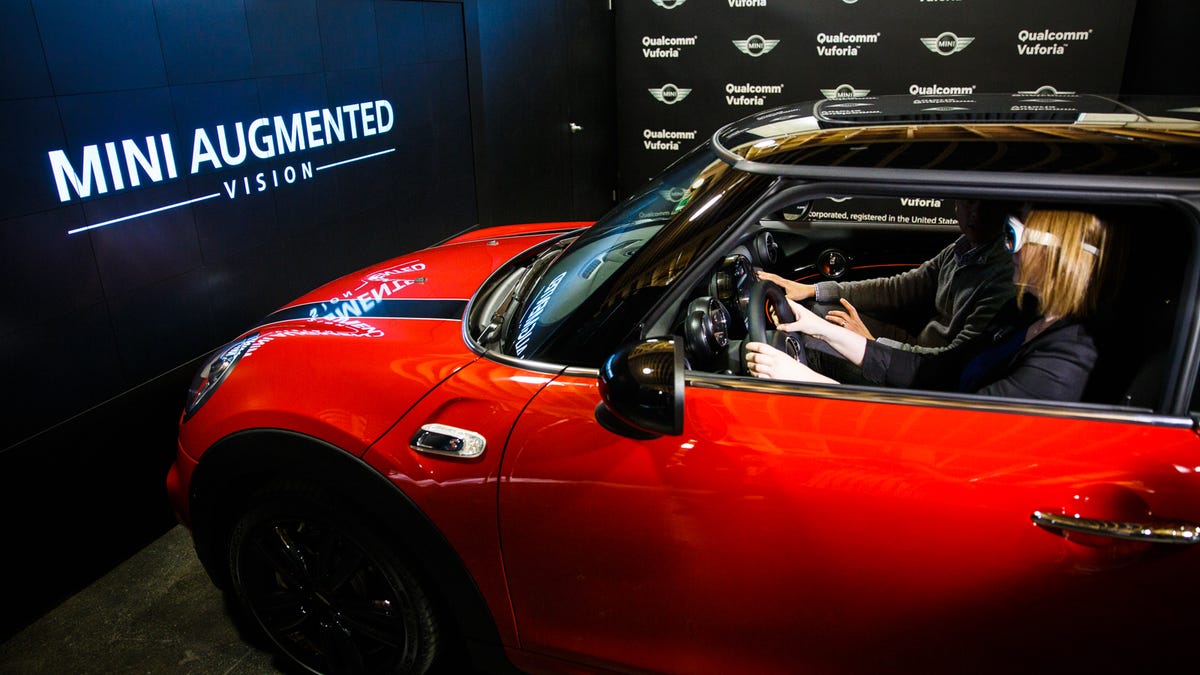
The British car marque showed off a new concept set of augmented reality glasses that not only work for drivers, but also pedestrians.
The glasses go beyond Google Glass by projecting information in the wearer's field of view, and showing information in context with real-world objects in your field of view.
The glasses are fairly chunky, as they encapsulate a Qualcomm Snapdragon chip, GPS chip, two cameras and two projectors.
Mini, which is owned by BMW, makes the glasses more fashionable with different colors, anticipating real-world usage.
In their current incarnation, the glasses are heavy, but production versions could be slimmed down considerably.
The bug-eye lens cover interior flat lenses.
Imagery from two 720p projectors appears on the interior lenses.
An accelerometer in the glasses helps the internal software know which way you're looking, and how to redraw the displays.
A power button on the ear piece includes a touch sensor, so you can scroll through menus.
This demonstration required a simple four-step calibration process.
In the car, the glasses provided route guidance tailored to driving, and the ability to peer through the doors of the car to see the sidewalk or other traffic.
The glasses interact with the car, showing the view from these external cameras. Most of the equipment in the car used to connect with the glasses, such as navigation and the phone system, was stock.
The Mini Augmented Vision system is merely a concept, but shows how augmented reality could benefit drivers and pedestrians.

